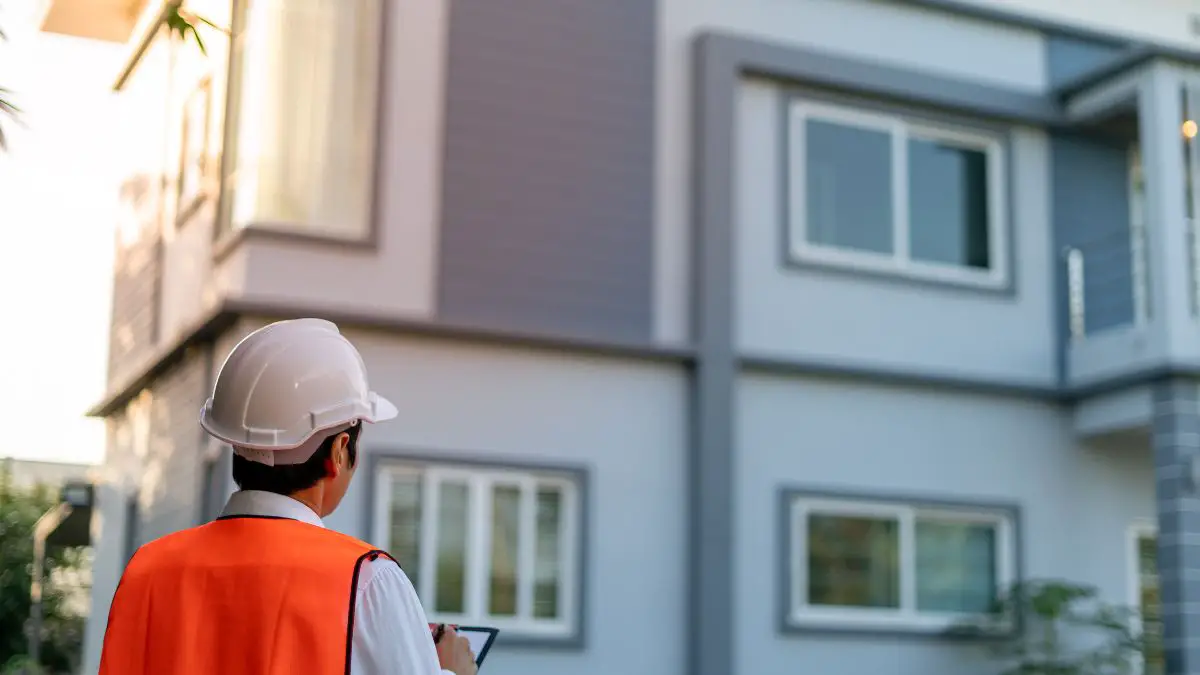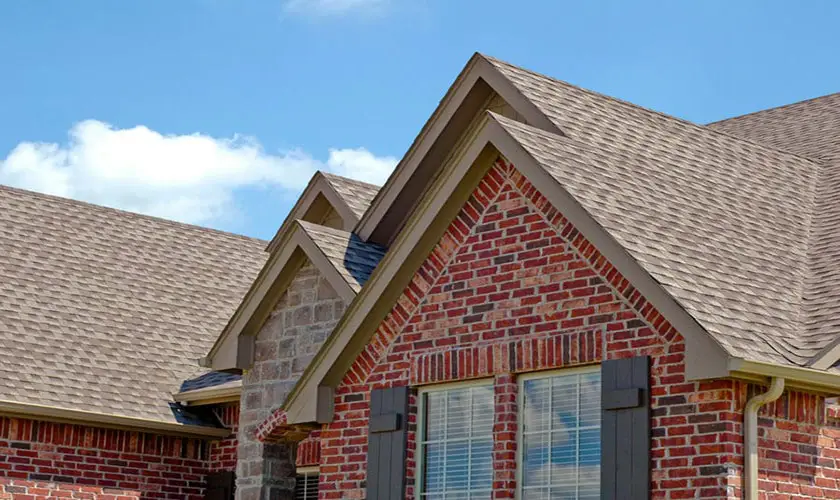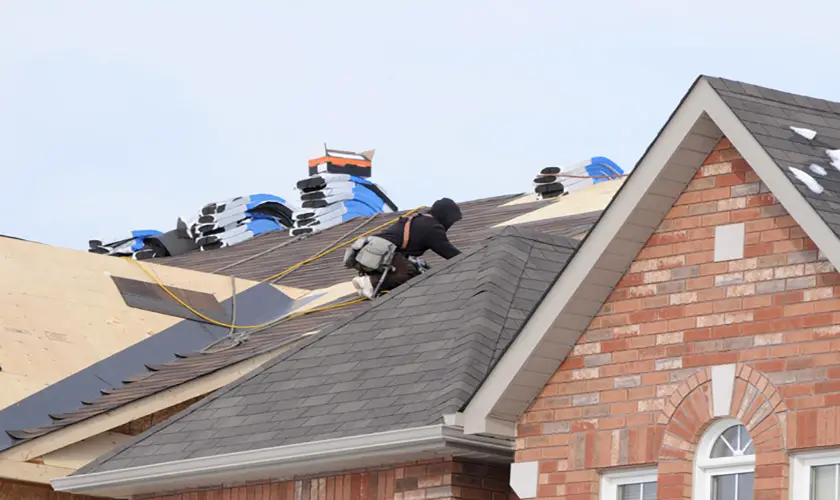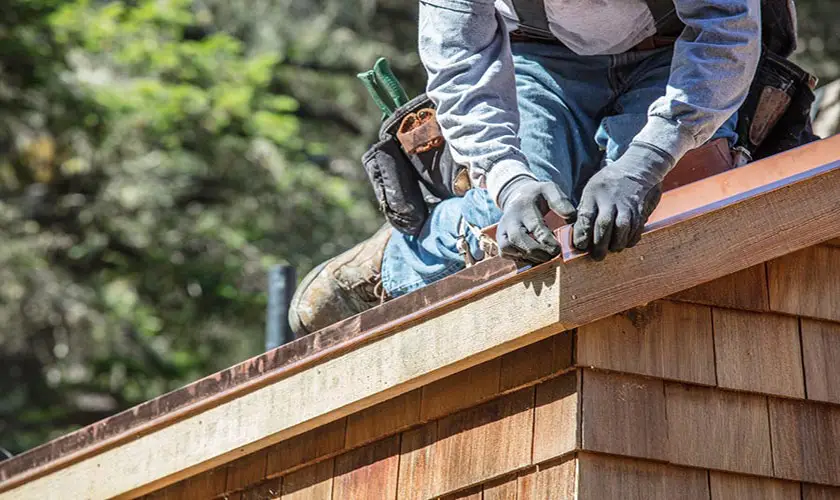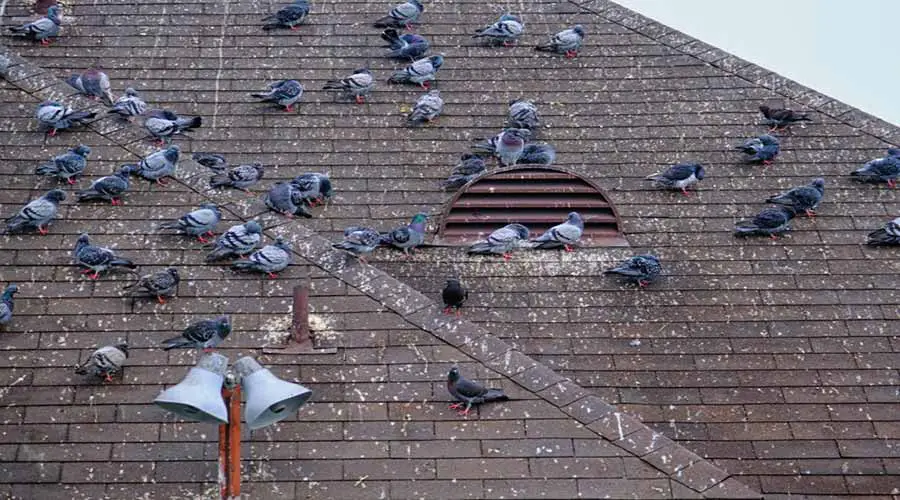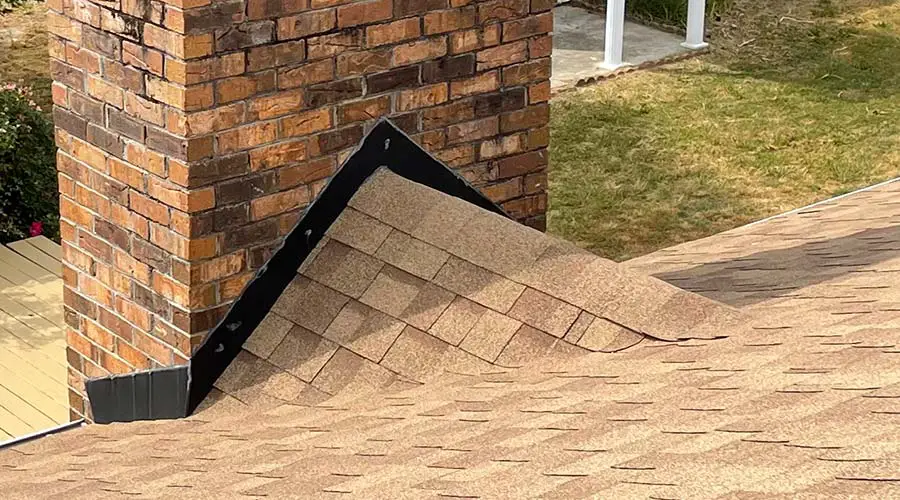
There is roofing, then there is innovative roofing. It takes an intelligent roofer to determine every challenge a roof may face and install measures that will counter that challenge. An example of intelligent roofing is using a chimney cricket as a means of waterproofing the chimney. So what is a chimney cricket and why is it important?
A chimney cricket or saddle is a triangular ridge similar to a toy roof that transitions horizontally between the peak of the top and the back sidewall of the chimney. The backside wall of the duct creates space for water, snow, and debris to gather, and the saddle solves these problems.
The typical chimney flashing is not enough to avert water from leaking inside the inner roof. When water or snow pools on the higher backside of a chimney, they will misbehave and find a way to break the barriers in place. It is where the cricket or saddle in a chimney comes in.
I did comprehensive research about chimney crickets and here’s the information I gathered:
What Is A Chimney Cricket?
What part of the roof is your chimney located? If installed on the roof slope, this is the kind of information you would want to know.
You might be aware of the standard chimney flashing but not aware of what a chimney cricket is. Chimney flashing is critical to the safety and longevity of the roof, and as it is, a chimney cricket or saddle is a superior form of chimney flashing.
A rule of thumb is that a chimney should always have a height of at least 3 feet from the base where it meets the roof.
The diameter of the base thereby varies from house to house. If the bottom of your chimney is more than 30 cm, then you have a valid reason to worry when heavy rains pound on your roof.
On one face of the roof near the ridge or peak of the roof protrudes your chimney, and because it is rectangular and has four high walls to it, three faces become visible from the ground while one face is hidden behind the sloping pitch of the roof.
Of course, there is no issue with that; the problem comes in when water and snow make a stopover at the back gutter, which is the hidden face of a chimney, before deciding to drain down as it should.
From the beginning of time, roof problems have always been myriad. With such a challenge of water or snow larking on the roof, a homeowner will have trouble sleeping peacefully at night, knowing very well that a leak problem on such a trajectory of the top is imminent.
That is why in the 1980s, master craftsman Phil Taggart invented the chimney cricket to restore sanity in the lives of homeowners.
Do you see that triangular-shaped miniature roof that transitions horizontally between the top ridge and the chimney wall? Well, that is a chimney cricket, also known as a chimney saddle.
The peak of the cricket should be at par with the height of the roof. However, this is not always the case with some chimney crickets.
A typical chimney cricket has a precise wooden frame whose measurements depend on the length of the chimney, the peak of the roof, and the inclination of the roof. So there is not a fit for all chimney crickets sizes.
The shell of the wooden frame is then dressed up with a metal sheet (with a drip edge) of your choice which could be; galvanized steel, stainless steel, or aluminum.
It is important to note that the cricket type of flashing cannot work alone as it does not cover the complete length of the backside wall of the chimney. Another complementary type of roof flashing, e.g., step flashing or counter flashing, could be appropriate.
What Is The Purpose Of A Cricket On A Chimney?
The most crucial purpose of a chimney cricket is to divert water and snow that would otherwise pool on the backside of the chimney where a vertical intersection is created.
While some homes have crickets built directly into the roof next to the chimney, others have metal crickets that are installed on top of the roof.
It is for 2 important reasons:
- To protect the chimney
- To protect the roof
To Protect The Chimney
The walls of the chimney are made from bricks which are a result of baked clay. As rainwater and snow cascade down the roof, the backside wall of the duct is hit rapidly every other time it rains or snows, year in year out.
Slowly by slowly, the fabric of the bricks is washed off as deterioration begins. Finally, water starts trickling down the chimney’s flue, forcing a homeowner to act swiftly.
Minor chimney repairs are not exorbitantly expensive; any repairs that would have been alienated in the first palace are still inherently costly.
A chimney cricket, on the other hand, solves this issue. Instead of water running into the chimney’s walls before diverting off, it now flows freely with no obstructions.
To Protect The Roof
Because of the size and height of the chimney, it tends to get in the way of rainwater smoothly cascading down the roof.
When water pools on the roof, it will indefinitely snuggle in between shingles. Shingles were not created for such scenarios but as a pathway for rainwater to drain off the top.
What do you think is the probability of water under the shingle not damaging the sheathing and finally leaking?
Well, even a chimney’s backside gutter cannot be a match for a pool of either water or snow.
Building A Chimney Cricket (The Math And The Cost)
Because no particular chimney cricket is the same in size as another, the cost of materials needed to install a chimney cricket or saddle vary depending on these factors:
- The size of the chimney in terms of height, length, and breath
- The inclination of the roof or how steep the roof is
- The type of metal you choose to explore with (different metals have different prices)
Top that up with how much a chimney specialist will charge for labor. You could spend close to $3000 minimum. On the higher side, you could spend as much as $5500.
- The chimney cricket is built on-site, and to build it, one must get the correct measurements of the chimney’s backside vertical wall, the height of the chimney, and the angle of the roof’s inclination.
- After that, the shingles around the area are removed (as is when installing an air vent) to pave the way for the building of a triangular wooden frame whose size is based on your measurements.
- That done, install sheathing on the cricket frame just like a regular roof and finally cover it with a malleable metal with a drip edge if possible.
There are essential things one should note and probable carry out in this project:
- It is important to note that building a chimney is not as easy as it may sound.
It involves precise calculations accurate enough to produce a perfect wooden structure that will perfectly fit into the space in between the chimney and the sloping roof.
- With all the flashings around the chimney walls, installing waterproofing material on the chimney wall will still be wise and necessary. After all, the roof is a susceptible area.
A Chimney Cricket Vs. A Chimney Saddle
Are you wondering what the difference is between a chimney cricket and a saddle? Wonder no more.
Aside from the saddle famously being used to ride a horse, the lower space where the sloping of the roof and the wall of the chimney meet is also called a saddle, given that the top and the chimney are two focal points.
The triangular flashing on the chimney is also called a chimney saddle.
However, the word chimney cricket is the undisputed word most people use to refer to the miniature roof-like flashing installed on the space behind the chimney and the clopping roof near the roof’s ridge.
But surprisingly, no one knows or is sure of where the word originated from. Nonetheless, the two terms are interchangeably used to refer to the same thing.
Where Is A Chimney Saddle Used And Why?
A chimney saddle known as the chimney cricket is installed to help naturally divert rainwater and snow. Without this type of flashing in place, water would flow from the roof’s peak but get blocked by the chimney wall to flow seamlessly down into the gutters.
As water hits the chimney wall, it digs into the fabric and causes it to wear out unnaturally.
As if that is not enough, water that pools temporarily can easily make its way inside the shingles and ultimately seep through the wooden board beneath the shingles.
Water and moisture can cause untold damage to the roofing material and will affect the home in general one way or the other.
The usual way to waterproof your roof is to install roof flashings around the chimney; step flashing or counter flashing are installed to curb water leakages.
But these chimney flashings are no match when there is too much rain or snow, which is where chimney saddles come in as it creates two slopes for water to flow away from the chimney wall.
Now, water in small percentage hits the chimney wall, unlike before where all of it would make a forceful impact before rerouting and finding its way down the gutters.
In the long run, the cricket on the chimney will have saved more than just water damage to the chimney and dangers of a leaking roof but will have gone an extra mile to deter dirt and debris from collecting on that vulnerable part of the roof.
Is A Chimney Cricket Necessary?
Roof repairs and, subsequently, chimney repairs can be a pain and a drag to the progress of a homeowner.
Who would not want their roofs and every roof feature to stay intact for as long as possible?
A chimney cricket could be the solution to a durable, long-lasting roof, but we all know the usual damages a roof can sustain because of water damage.
The thing is that one should be able to tell apart roof leakage brought about for lack of cricket on the roof and leakage brought about by other factors such as;
- As the bricks on the chimney walls are exposed to the elements, they will inevitably dry out and crack at some point. These cracks could serve as a point where water could penetrate through and leaks inside the chimney.
- A chimney’s backside gutter and any other flashing in place aside from a chimney cricket are susceptible to damage or looseness. When they damage, water leakage will be unavoidable unless repairs or replacements are carried out.
Chimney crickets are very necessary for roof protection, but it all depends on the owner, the type of the roof, and the chimney’s location.
Caution:
When installing or repairing a chimney cricket, it is better to involve a trained individual to avoid unnecessary damage to the roof and the chimney.
It could lead to more water leakage and more money as you will call a professional to repair the unnecessary damage the roof or chimney has accidentally sustained.
Roof And Chimney Maintenance
Many homeowners look away from regular roof maintenance when the roof has no apparent damage to warrant a leakage. But remember that any minor damage could potentially blow up so much that it will require a replacement.
The clay bricks used to build a chimney are usually durable, but water is its number one enemy.
Even leaves and debris that collect on the duct wall should be cleared off as they may rot and start holding up the water, making the roof and the chimney damp even when there are no rains.
As mentioned above, the structure of a chimney does not see eye to eye with water; it is, therefore, essential to always ensure that you apply a water sealant on the chimney walls to prevent water or moisture from sneaking its way into the fabric of the bricks.
Also, keep the walls and the crown of the chimney well cared for and if there are any cracks on any part, make sure they are repaired before they crack any further.
A chimney that is in good shape not only saves your pocket but also ensures the safety of your household.
Final Thought
A chimney cricket is a triangular ridge similar to a toy roof that transitions horizontally between the peak of the top and the back sidewall of the chimney.
The main purpose of the chimney is to divert water and snow that would otherwise pool on the backside of the chimney, where a vertical intersection is created.
It is better to be safe than sorry, but all roof leaks around that area are written off even when a chimney cricket is installed. Leaks might still occur, but not necessarily from the chimney cricket location.
Most of the time, a homeowner might not be sure where the leaks are originating from. When this is the case, it is wise to seek the insight of a certified chimney technician and not a random roofer, as they are in a better place to identify and tackle chimney problems.



